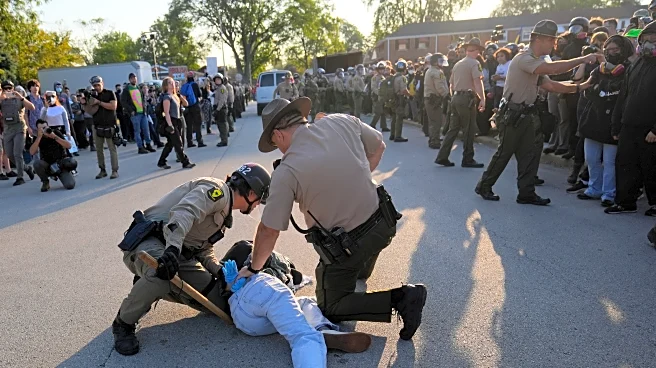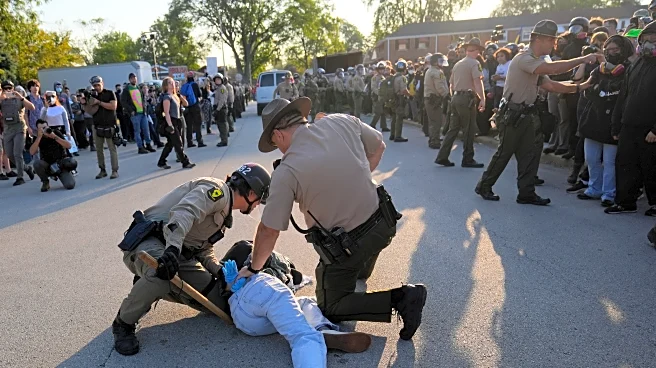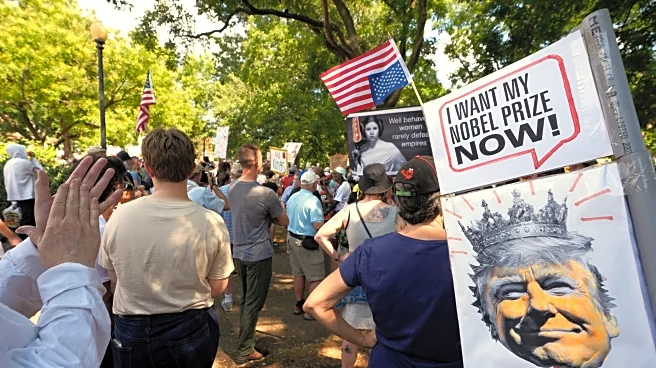What's Happening?
President Trump's administration has initiated a nationwide television advertising campaign to recruit local law enforcement officers to join U.S. Immigration and Customs Enforcement (ICE). This effort is part of a broader immigration enforcement strategy. The ads are being broadcast in over a dozen cities, including Dallas, Chicago, and Seattle. They specifically target officers who are frustrated by local restrictions on immigration enforcement, particularly in sanctuary cities. The campaign aims to bolster ICE's ranks as the administration intensifies its focus on immigration control.
Why It's Important?
The recruitment campaign underscores the administration's commitment to strengthening immigration enforcement, which has been a central theme of President Trump's policy agenda. By targeting officers in sanctuary cities, the administration seeks to circumvent local policies that limit cooperation with federal immigration authorities. This move could lead to increased tensions between federal and local governments, impacting community relations and law enforcement dynamics. The campaign may also influence public opinion on immigration policies and enforcement practices, potentially affecting future legislative and electoral outcomes.
What's Next?
The success of the recruitment campaign could lead to a significant increase in ICE personnel, enhancing the agency's capacity to conduct immigration enforcement operations. This may result in more frequent and widespread immigration raids, particularly in sanctuary cities. Local governments and advocacy groups are likely to respond with increased resistance and legal challenges, potentially escalating the debate over immigration policy. The administration's actions may also prompt legislative efforts to address the balance between federal and local authority in immigration enforcement.
Beyond the Headlines
The campaign raises ethical questions about the role of local law enforcement in federal immigration enforcement and the potential impact on community trust. It also highlights the ongoing debate over sanctuary cities and their place in the broader immigration policy landscape. The administration's approach may influence long-term shifts in immigration enforcement strategies and the relationship between federal and local authorities.












